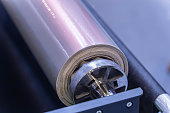How Heavy Toner Loads Compromise Pressure Roller Performance
페이지 정보
작성자 Noemi 작성일 25-10-09 10:06 조회 7 댓글 0본문

Heavy toner loads can significantly impact the integrity of heat rollers in digital printing devices. These rollers are engineered to apply stable thermal and mechanical force to bond toner to the media. When high-coverage prints are frequent, the quantity of resin needing to be bonded increases substantially, forcing the roller to endure greater mechanical load, resulting in higher temperatures and خرابی غلطک پرس پرینتر heightened physical strain.
During extended operation, this load can lead to surface deterioration. The silicone layer may turn tacky, become brittle, or develop uneven wear patterns. In extreme cases, the roller can develop permanent imprints from fused toner deposits, which then leaves marks on new output as shadowed bands.
Furthermore, the intensified temperature demand can induce premature failure of the roller's substrate layers, thereby diminishing functional longevity.
Dense graphic output also contribute to toner accumulation inside the heating module. This fused toner sludge can crystallize and detach, polluting adjacent components and potentially causing transport blockages or uneven fusing. Routine fuser upkeep can lessen the impact, but it cannot undo the structural damage caused by continuous high-toner operation.
Commercial-grade machines are less susceptible to this issue, but entry-level units are especially at risk such stresses. Users should be mindful that producing solid-fill pages can accelerate roller wear. To preserve pressure roller integrity, it is advisable to reduce solid-fill printing, activate toner-saving features, and follow manufacturer recommendations. Ignoring these factors may lead to costly repairs, potentially requiring the the full fuser system to be upgraded.
댓글목록 0
등록된 댓글이 없습니다.


